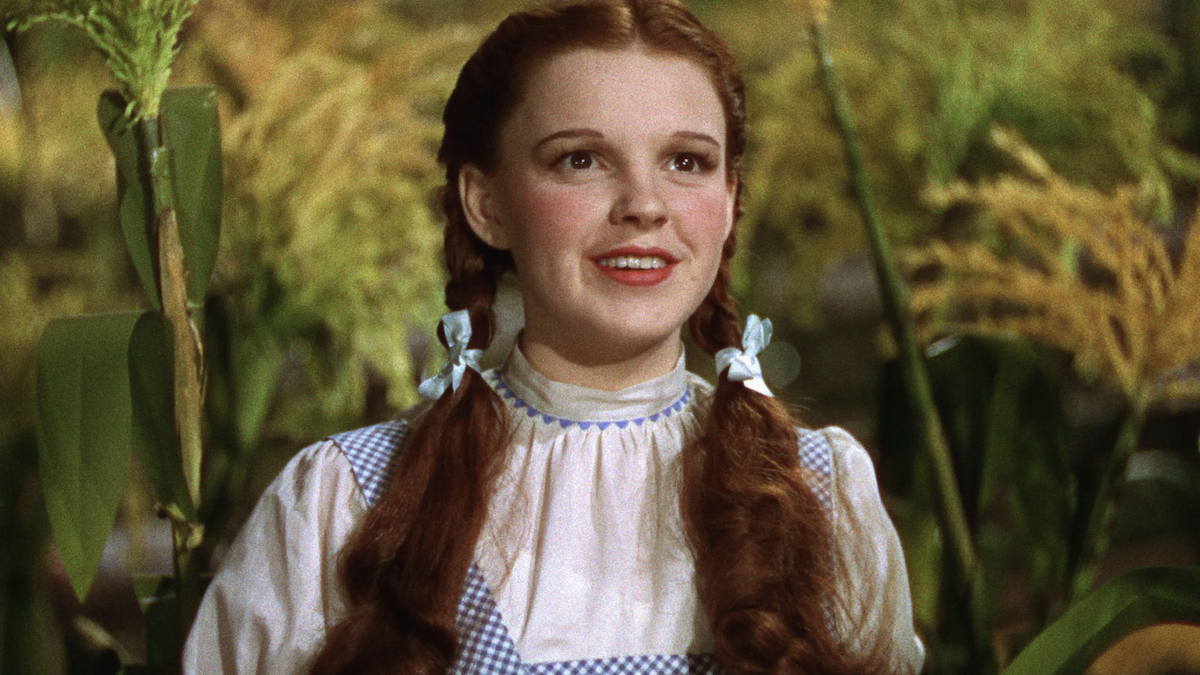It simply doesn’t get more iconic than The Wizard of Oz. The 1939 film continues to serve as an important cultural cornerstone and will forever hold a special place in cinema history, and that is greatly owed to the actress who brought its main character, Dorothy Gale, to life: Judy Garland.
And it doesn’t matter if you’ve never even seen the movie, although with it on TV pretty often, it’s hard to fathom such a thought. Regardless, everyone knows who the Tin Man is and can probably, even if vaguely, recognize that iconic “Kansas” line, as famously uttered by Garland all those years ago.
Garland was born June 10, 1922, making her 16 when she was cast as Dorothy. According to the HuffPost, while there was a serious push from Metro-Goldwyn-Mayer’s parent company, Loew’s Inc, to cast Shirley Temple as Dorothy, Garland was always the first choice, primarily for her singing abilities.
And the rest, as they say, is history. The Wizard of Oz received immediate and widespread critical acclaim upon its release and won two Academy Awards for its music and score (via IMDb). While the film wasn’t an immediate success at the box office, it would score big upon a re-release during the ’40s, maintaining its cultural impact and become a world-renowned phenomenon. That’s if you choose to ignore its lengthy dark past, I suppose.
Nevertheless, the film propelled Garland to stardom and cemented her name in the annals of cinema history. However, the actress would lead a tragic life, overburdened by the industry’s cruel and unforgiving nature.
Filming The Wizard of Oz was dreadful for Garland
The Wizard of Oz might have been a bright and colorful film filled with laughter, music, and rainbows, but the film’s actual production was anything but. According to Far Out Magazine, the movie’s rotating team of directors and uncredited writers signaled just how troubled things truly were behind the camera, especially for its leading actress.
Garland’s reported experiences while filming The Wizard of Oz were downright harrowing and atrocious. Her ex-husband alleged that the actors playing the Munchkins often groped her. “They thought they could get away with anything because they were so small,” Luft wrote in a memoir (per Far Out Magazine). “They would make Judy’s life miserable on set by putting their hands under her dress. The men were 40 or more years old.”
Meanwhile, studio bosses obsessively controlled Garland’s diet, going as far as to have doctors prescribe her “pills to control her weight and energy levels – a common practice within the industry at the time” (per Vogue). Not only was her diet strictly controlled and monitored, the actor was reportedly allowed only “limited” time with “anyone her own age” (via Far Out Magazine). On top of this mountain of misery, Garland, despite playing the movie’s main character and being in nearly every scene, was paid less than her co-stars (via The Los Angeles Times). For years it has been speculated that only Toto’s (the dog) trainer was paid less than Garland.
Filming The Wizard of Oz led to Garland developing an addiction to amphetamines and barbiturates (per Asana Recovery). Sadly, the performer’s experiences and usage of drugs predated her work on the fantasy epic. Long before her filming The Wizard of Oz, Garland’s own mother reportedly kept her 10-year-old daughter drugged “with stimulants” so she could keep up with lengthy and rigorous shoots; then, once Judy was no longer needed on set, she was “force-fed” sleeping pills (via Far Out Magazine).
Tragically, addiction is what eventually led to Judy Garland’s death. At only 47, the actress died due to an “accidental overdose of barbiturates” (per American Songwriter), leaving behind three children.
